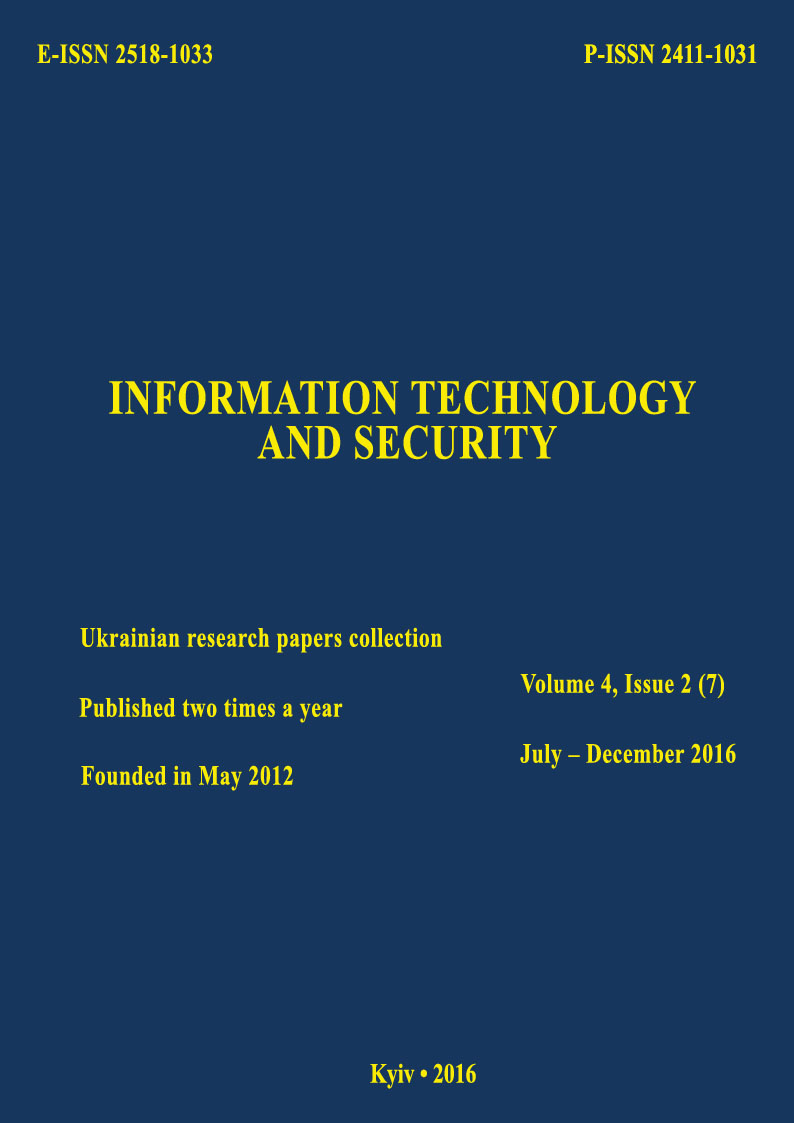Use of entropy approach for information security risks assessment
DOI:
https://doi.org/10.20535/2411-1031.2016.4.2.110082Keywords:
Information security, information security risk, uncertainty, entropy, entropy approach.Abstract
The risk of information security as an influence of uncertainty on the achievement of goals is considered. In achieving the goals meant to ensure the confidentiality, integrity and availability of information. Estimation of such influence is carried out by the elimination of entropy as a measure of uncertainty. The state of uncertainty is described by the final scheme. The variety of threats for information security and loss resulting from their implementation is set for its definition. It takes into account the existence of different threats that lead to the same losses, and threats, due to the implementation of which there are no losses. At the same time, the distribution of likelihood of damage as a result of the implementation of threats for information security is considered as known. The correctness of that approach is confirmed by the implementation of the entropy characteristics. Therefore, the use of an entropy approach allows to construct an intuitively more correct basis for quantitative risk assessment of information security. It is associated with a fact of operating the form of the distribution of a random variable but not its specific values. In this case, the advantages and disadvantages of the entropy approach are established. The using of fuzzy set theory and likelihood is offered to overcome the identified shortcomings in prospect.
References
V.V. Mokhor, and V.V. Tsurkan, “ The entropy approach to the definition of the "information security risk”, in Proc. ХХVIII conf. Modeling, Кyiv, 2009, p. 22.
E.M. Bronshtein, and O.V. Kondrateva, “ About efficiency of use entropic risk measures at securities portfolio forming”, Financial Analytics: Science and Experience, vol. 4, iss. 11, pp. 7-10, March 2011.
R.A. Gevorgian, “Entropy approach to the market risks assessment”, Financial Risk Management, no. 2, pp. 146-153, 2012.
E.M. Bronshtein, and O.V. Kondrateva, “Security portfolio management based on combined entropic risk measures”, Theory and control systems, no. 5, p. 172, 2013.
doi: 10.7868/S0002338813050041.
E.V. Levner, and A.S. Ptuskin, “On the choice of directions of modernization of enterprises based on information entropy economic risk model”, Economics and Mathematical Methods, vol. 50, no. 2, pp. 111-126, 2014.
R.S. Ariautov, A.G. Pimonov, and K.E. Reizenbuk, “Decision support system for securities portfolio management based on entropic risk measures”, Vestnik of Kuzbass State Technical University, no. 6, pp. 169-174, 2015.
V.V. Mokhor, V.V. Tsurkan, and S.M. Mykhailov, “Entropy approach to information security risk assessment in cyberspace”, in Proc. ІV international conf. ITSEC, Kyiv, 2014, с. 43.
A.I. Khinchin, “The concept of entropy in probability theory”, Uspekhi Matematicheskikh Nauk, vol. VIII, iss. 3 (55), pp. 3-20, May-June 1953.
M.V. Volkshtein, Entropy and information. Moscow, Russia: Nauka. 1986.
Downloads
Published
How to Cite
Issue
Section
License
Copyright (c) 2020 Collection "Information technology and security"

This work is licensed under a Creative Commons Attribution 4.0 International License.
The authors that are published in this collection, agree to the following terms:
- The authors reserve the right to authorship of their work and pass the collection right of first publication this work is licensed under the Creative Commons Attribution License, which allows others to freely distribute the published work with the obligatory reference to the authors of the original work and the first publication of the work in this collection.
- The authors have the right to conclude an agreement on exclusive distribution of the work in the form in which it was published this anthology (for example, to place the work in a digital repository institution or to publish in the structure of the monograph), provided that references to the first publication of the work in this collection.
- Policy of the journal allows and encourages the placement of authors on the Internet (for example, in storage facilities or on personal web sites) the manuscript of the work, prior to the submission of the manuscript to the editor, and during its editorial processing, as it contributes to productive scientific discussion and positive effect on the efficiency and dynamics of citations of published work (see The Effect of Open Access).

